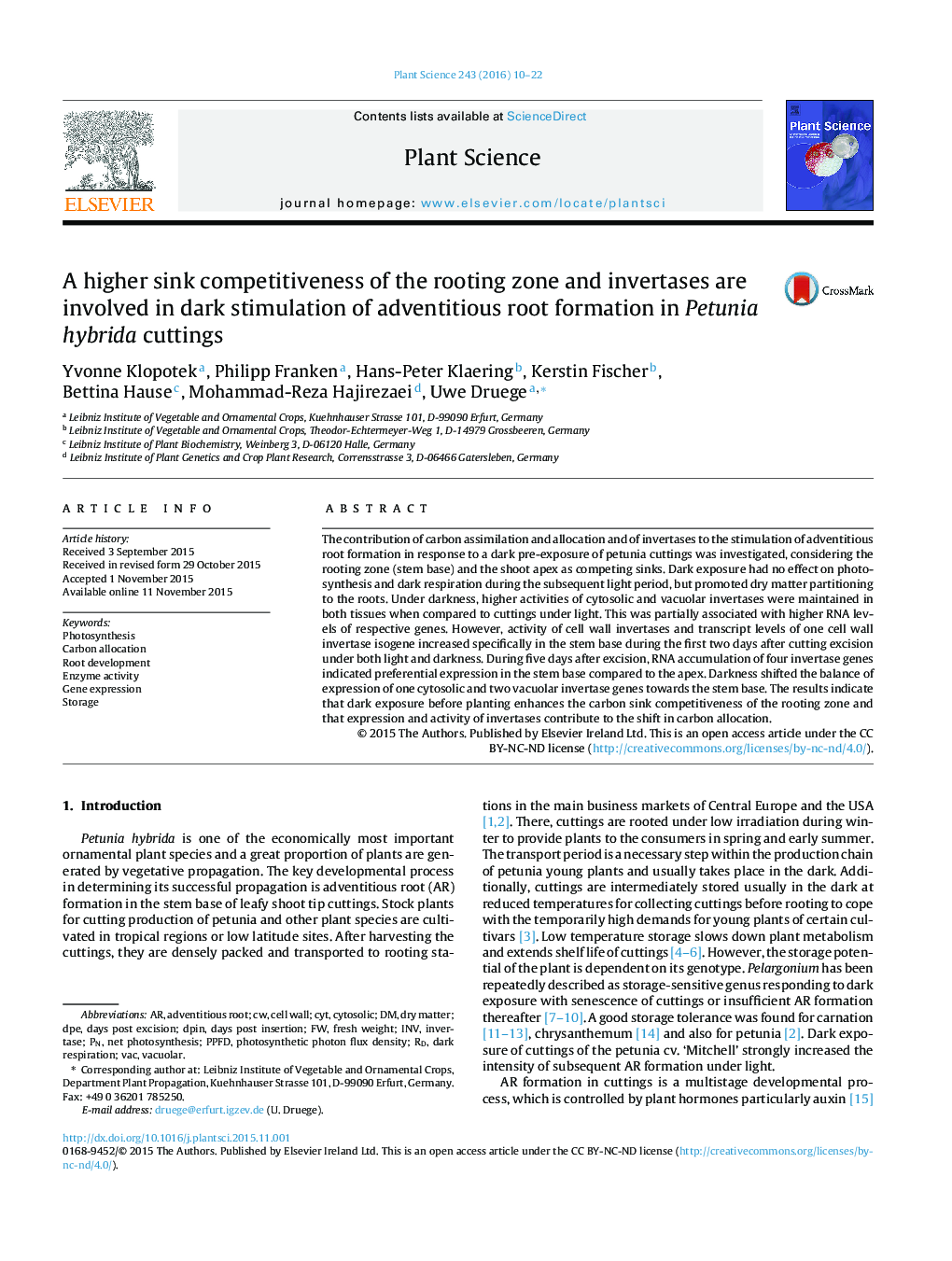| Article ID | Journal | Published Year | Pages | File Type |
|---|---|---|---|---|
| 8357201 | Plant Science | 2016 | 13 Pages |
Abstract
The contribution of carbon assimilation and allocation and of invertases to the stimulation of adventitious root formation in response to a dark pre-exposure of petunia cuttings was investigated, considering the rooting zone (stem base) and the shoot apex as competing sinks. Dark exposure had no effect on photosynthesis and dark respiration during the subsequent light period, but promoted dry matter partitioning to the roots. Under darkness, higher activities of cytosolic and vacuolar invertases were maintained in both tissues when compared to cuttings under light. This was partially associated with higher RNA levels of respective genes. However, activity of cell wall invertases and transcript levels of one cell wall invertase isogene increased specifically in the stem base during the first two days after cutting excision under both light and darkness. During five days after excision, RNA accumulation of four invertase genes indicated preferential expression in the stem base compared to the apex. Darkness shifted the balance of expression of one cytosolic and two vacuolar invertase genes towards the stem base. The results indicate that dark exposure before planting enhances the carbon sink competitiveness of the rooting zone and that expression and activity of invertases contribute to the shift in carbon allocation.
Keywords
Related Topics
Life Sciences
Agricultural and Biological Sciences
Plant Science
Authors
Yvonne Klopotek, Philipp Franken, Hans-Peter Klaering, Kerstin Fischer, Bettina Hause, Mohammad-Reza Hajirezaei, Uwe Druege,
